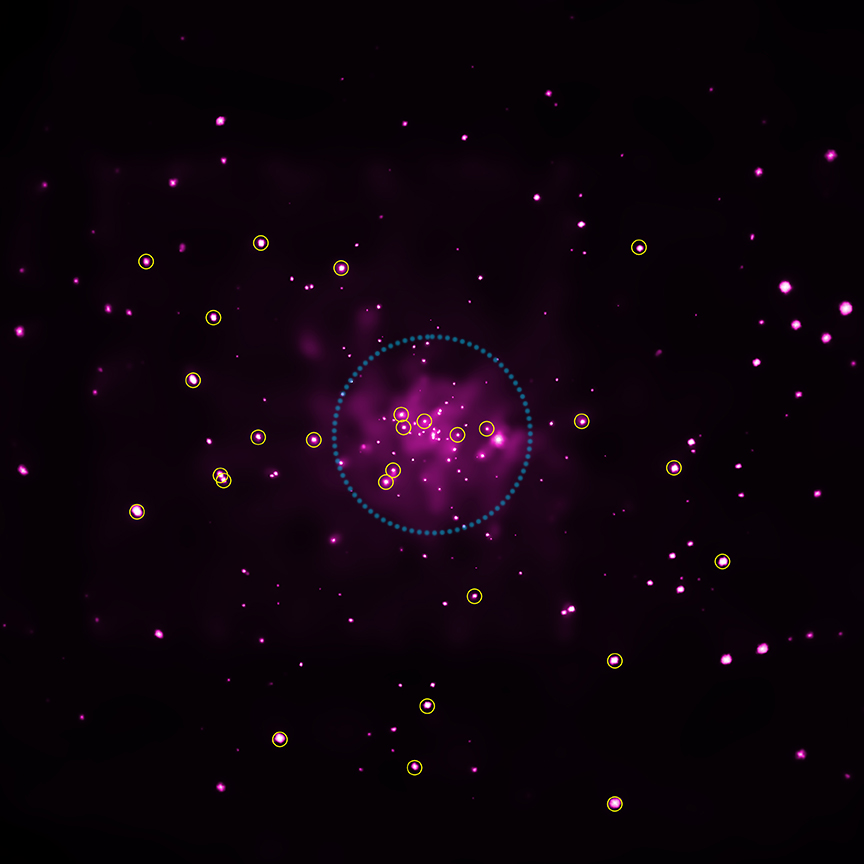
 Credit: NASA/CXC/SAO/R.Barnard, Z.Lee et al.
Credit: NASA/CXC/SAO/R.Barnard, Z.Lee et al.
Finding the Holes in M31
How many black holes exist in a typical galaxy? Most black holes are produced by the death of very massive stars when the star's core collapses, so the number depends on the number of such stars that have been produced by the galaxy over the galactic lifetime. Such stars are exceedingly rare, but there are a lot of stars in galaxies. Estimates suggest that millions of black holes could exist in a galaxy the size of the Milky Way. But black holes can be exceedingly difficult to detect since they emit no radiation by themselves. However, if they have a nearby stellar neighbor, the intense gravity of the black hole can pull material off its companion, and, in the death-spiral before the material is swallowed by the black hole and crushed out of its spatial existence, the material will emit a scream of X-rays that can be detected over vast distances. A new study by the Chandra X-ray Observatory of our neighboring galaxy, M31 (also known as the Andromeda galaxy), has nearly than tripled the number of black holes previously identified in this galaxy. The image above shows the Chandra X-ray image of the inner region of M31; the bright points which are circled are the new black hole candidates found by Chandra. But where are all the others?
Published: June 24, 2013
<
HEA Dictionary ● Archive
● Search HEAPOW
● Other Languages
● HEAPOW on Facebook
● Download all Images
● Education ● HEAD
>

Each week the HEASARC
brings you new, exciting and beautiful images from X-ray and Gamma ray
astronomy. Check back each week and be sure to check out the HEAPOW archive!
Page Author: Dr. Michael F. Corcoran
Last modified Tuesday, 27-Feb-2024 10:06:44 EST


